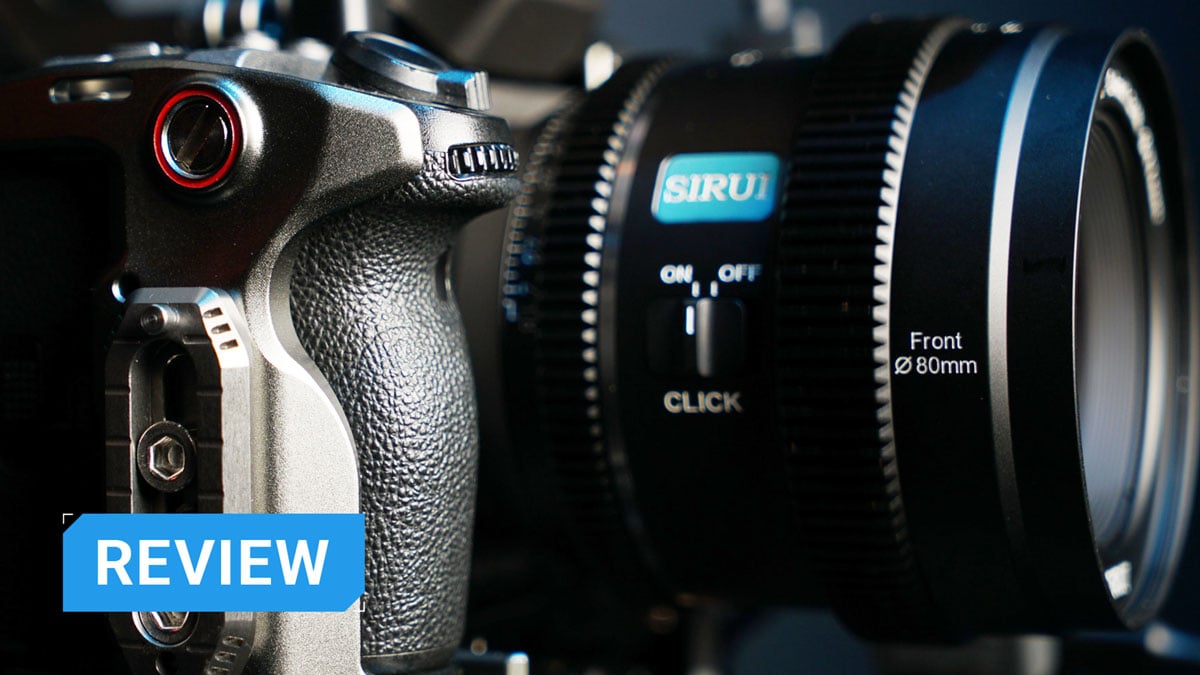
Since SIRUI announced they are making a 20mm anamorphic AF lens, I wanted to put my hands on one. I mean, I love anamorphic lenses (see my review of the SIRUI Saturn set here). If you are just looking for the TL;DR, then run and back the campaign, while you can still get the early bird discount. If you want more information, read on.
And adding autofocus capabilities to anamorpic lenses has kinda been my dream. Sadly, if you are not using an external Lidar, there is no way to have both anamorphic and autofocus, but this is changing, and I’ll talk more about it in a bit.
Specifically, Sirui is adding a 20mm T1.8 to its S35 anamorphic line which already includes a 40mm AF anamorphic. If you’re already familiar with their 40mm, this new addition brings a much wider field of view while keeping the same 1.33x squeeze factor. The result? A seriously cinematic look with an immersive sense of depth and space.
The Sirui 20mm Anamorphic has a de-squeeze ratio of x1.33. On an FX30, which is 16:9, you’d get about a 21.28:9 ratio (or 2.364:1), which is perfect if you are aiming for Cinemascope. On an open gate 4:3, you’d get about 5.32:3 (or 1.77:1), which is pretty close to standard movies.
Why anamorphic with autofocus is a gamechanger
Autofocus and anamorphic usually don’t mix. Most anamorphic lenses are manual focus only, forcing cinematographers to rack focus by hand. That’s fine for controlled sets but quite a pain for fast-moving shoots, documentaries, or solo creators. Specifically, if you are shooting with a gimbal, it’s almost impossible to control an anamorphic lens. Between de-squeeze support, manual focus, and the sheer weight of most anamorphics, this was simply not an option. Let me dive in and see if the bang is worth the buck.
If your camera has a good face or eye detection, then you’d really see how the autofocus shines. You can see this for your self in the samples below. (I am showing bot the 20mm and 40mm).
Size and weight: Anamorphic for a one-man show
Compared to SIRUI’s Venus line, the 20mm S35 anamorphic is impressively small and lightweight. About half a kilo. This is a big deal because traditional anamorphic lenses are often bulky and front-heavy. The lighter weight makes it possible to use on gimbals, handheld rigs, and even drones.
It is also quite compact. If I had to guess, I would say it draws its optical design from the Saturn “nano” line with an additional motor, but my guess is as good as yours.
Autofocus performance: Tested on the Sony FX3
We tested the lens on the Sony FX3, and the autofocus was surprisingly solid, even in low light. Sony also supports a x1.3 de-squeeze. It’s not precisely x1.33, but it’s close enough for understanding your shot. (if you are wondering, on the FX3, you need the latest firmware, then you can go through these menus: Setup -> display options -> De-squeeze -> 1.3).
However, there’s a small catch—if you use Sony’s anamorphic preview mode, autofocus won’t work. The workaround? Use an external monitor to keep everything sharp while still getting a proper anamorphic preview.
The Autofocus is pretty fast—the lens holds an STM motor—but it’s not “immediate” like with some faster lenses. It is also as quiet as you’d expect.
Optical characteristics: Bokeh and flare
At T1.8, you get a bit of a hexagonal bokeh, but as you stop down to about T2.4, you get the familiar anamorphic oval bokeh.
You get a choice between blue and neutral flares (we have the 20mm on neutral and the 40mm on blue, so you can compare). The blue option is that signature anamorphic sci-fi streak, while neutral is more subtle for a natural look.
Special features


Clicked or de-clicked aperture: SIRUI gives you control over how you adjust exposure. Keep it clicked for precise f-stop control, or de-click it for smooth aperture pulls.
Manual or camera-controlled aperture: you can set the aperture to be manual with an aperture ring, or let the camertq control the aperture if you set the ring to “A”.
Part of a growing set
With the 40mm and now the 20mm, it’s safe to assume that SIRUI is building a full set. You get the same “look,” the same gear location, and the same 77mm filter. This is how the lens rolls with Smallrig’s magic fiz follow focus, and it’s smooth.


I really hope to see more of this line coming into the market. I think SIRUI are onto something here, and I would love to see the line growing, not only in focal length options but also into full frame. If their “Saturn” line is any indication, we might see more focal lengths added soon.
Price and availability
The SIRUI 20mm T1.8 1.33x S35 AF Anamorphic is launching with a super early bird price of $679 on Indiegogo (15% off). It’s available in Sony E, Nikon Z, Fuji X, Leica L, and MFT mounts.
Final thoughts
I love this lens! I don’t do a lot of gimbal work and I am still blown away. Having accurate autofocus along with face (and eye) detection on an anamorphic just makes my life 100 times easier. and for sub $700, this is really not something to think twice about.
Disclaimer: We only share crowdfunded projects we believe are legitimate. However, most of those projects are not in a delivery state. Make sure you look into the project and make an informed purchasing decision. While some projects may offer amazing rewards, others unfortunately may not deliver on their promises.
Launchpad
Welcome to DIYP Launchpad. DIYP Launchpad is a place where we share new gear with you. Full disclosure: DIYP may receive compensation for the time invested in creating the review. Brands sending gear for the DIYP Launchpad segment do not see the review before it goes live or have any editorial control over it.

